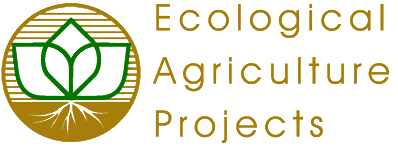

EAP Publications | Virtual Library | Magazine Rack | Search | What's new
TABLE 1: SUBSTANCES FOR USE IN SOIL FERTILIZING AND CONDlTIONING
| Substance | Description; compositional requirements; conditions of use |
| Farmyard and poultry manure | Need recognised by certification body or authority if not sourced from organic production systems. 'Factory' farming'18 sources not permitted. |
| Slurry or urine | If not from organic sources, need recogmsed by certification body or authority. Use preferably after controlled fermentation and/or appropriate dilution. 'Factory' farming sources not permitted. |
| Composted animal excrements, including poultry manure and composted farmyard manure | Need recognised by the certification body or authority. 'Factory' farming sources not permitted. |
| Dried farmyard manure and dehydrated poultry manure | Need recognised by the certification body or authority. 'Factory' farming sources not permitted. |
| Guano | Need recognised by the certification body or authority. |
| Straw | Need recognised by the certification body or authority. |
| Composts from spent mushroom & Vermiculture substrates | Need recognised by the certification body or authority. The initial composition of the substrate must be limited to the products on this list. |
| Composts from organic household refuse | Need recognised by the certification body or authority. |
| Composts from plant residues | ________ |
| Processed animal products from slaughterhouses & fish industries | Need recognised by the certification body or authority. |
| By-products of food textile industries | Not treated with synthetic additives. Need recognised by the certification body or authority body. |
| Seaweeds and seaweed products | Need recognised by the certification body or authority. |
| Sawdust, bark and wood waste | Need recognised by certification body or authority. |
| Wood ash | ________ |
| Natural phosphate rock | Need recognised by certification body or authority. Cadmium should not exceed 90mg/kg P2O5. |
| Basic slag | Need recognised by the certification body or authority. |
| Rock potash, mined potassium salts (eg kainite, sylvinite) | Less than 60% chlorine. |
| Sulphate of potash (eg patenkali) | Obtained by physical procedures but not enriched by chemical processes to increase its solubility. Need recognised by the certification authority or body. |
| Calcium carbonate of natural origin (eg chalk, maerl, marl, limestone, phosphate chalk) | ________ |
| Magnesium rock | ________ |
| Calcareous magnesium rock | ________ |
| Epsom salt (magnesium-sulphate) | ________ |
| Gypsum (calcium sulphate) | ________ |
| Stillage and stillage extract | Ammonium stillage excluded. |
| Sodium chloride | Only mined salt. |
| Aluminium calcium phosphate | Maximum 90 mg/kg P205. |
| Trace elements ( eg. boron, copper, iron, manganese, molybdenum, zinc) | Need recognised by certification body or authority. |
| Sulphur | Need recognised by certification body or authority. |
| Stone meal | ________ |
| Clay (ea. bentonite, perlite, zeolite) | ________ |
| Naturally occurring biological organisms (eg worms) | ________ |
| Vermiculite | ________ |
| Peat | Excluding synthetic additives; permitted for seed, potting module composts. Other use as recognised by certification body or authority. |
| Humus from earthworms and insects | ________ |
| Zeolites | ________ |
| Wood charcoal | ________ |
| Chloride of lime/soda | Need recognised by the certification body or authority. |
| Human excrements | Need recognised by certification body or authority. If possible aerated or composted. Not applied to crops intended for human consumption. |
| By-products of the sugar industry (eg Vinasse) | Need recognised by certification body or authority. |
| By-products of industries processing ingredients from organic agriculture | Need recognised by certification body or authority. |
Codex Alimentarius Working Group, May 27th, 1998. (Draft copy)
Important Note
Text that appears in bold and underlined letters indicates new text relative to the last document of the "Codex Alimentarius Working Group".
Text that appears in red italics letters indicates eliminated text.
Text that appears in green will be discussed next year.
Info Request | Services | Become EAP Member | Site Map
Give us your comments about the EAP site
Ecological Agriculture Projects, McGill University (Macdonald
Campus)
Ste-Anne-de-Bellevue, QC, H9X 3V9 Canada
Telephone:
(514)-398-7771
Fax:
(514)-398-7621
Email: info@eap.mcgill.ca
To report problems or otherwise comment on the structure of this site, send mail to the Webmaster